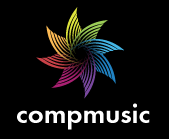ISMIR 2012
The 13th International Society for Music Information Retrieval Conference (ISMIR 2012) was an important event for CompMusic. At ISMIR 2011 we had presented the project and some very preliminary work (see blog post) and this time the goal was to have a stronger impact by presenting more mature research results. We definitely succeeded, we had 8 papers from CompMusic (see news item) and other papers and events showed the influence of our project.

ISMIR 2012 took place in Porto, Portugal, from October 8th to the 12th 2012. The conference was very well organized and there were quite a few innovative elements that made the event a bit different from previous editions, with a result that for me was very positive. I want to congratulate both the Conference Chairs (Fabien Gouyon and Carlos Guedes) and the Scientific Chairs (Perfecto Herrera, Luis Gustavo Martins and Meinard Müller) for promoting innovation at the organizational level.
95 papers were accepted to the Conference, out of the 215 submissions, which means a 44% acceptance rate (8 out of the 95 papers were from our project!!). The selection process was done rigorously and thus the quality of the papers was quite good. A part from the Oral and Poster sessions in which the papers were presented, there were quite a few other events, like tutorials, keynotes, concerts, a panel session, a late-break/demo session, a special session dedicated to reflecting on MIR, and some satellite events.
From the tutorials I would like to highlight the one by François Pachet on "Why is Jazz Interesting?". Jazz, like all the music genres we study in CompMusic, has some specificities that are very interesting to study from an MIR point of view.
The first Oral Session of the conference was on "Musical Cultures", thus very relevant for us and in which Tan presented our paper on Ney embellishments (Özaslan et al., 2012).
Of all the papers presented I would like to highlight a few for their special relevance to CompMusic, of course not counting our own papers.
- Peeters & Fort. "Towards a (better) Definition of the Description of Annotated MIR Corpora".
- Pikrakis et al. "Tracking Melodic Patterns in Flamenco Singing by Analyzing Polyphonic Music Recordings"
- Peeters et al. "A Multimedia Search and Navigation Prototype, Including Music and Video-clips"
- Bohak & Marolt. "Finding Repeating Stanzas in Folk Songs"
- Jure et al. "Pitch Content Visualization Tools for Music Performance Analysis"
- Devaney et al. "A Study of Intonation in Three-Part Singing using the Automatic Music Performance Analysis and Comparison Toolkit (AMPACT)"
- Hue & Lee. "A Cross-cultural Study of Music Mood Perception between American and Chinese Listeners"
A part from the paper presentations some of the other events were also very relevant for us. The Panel session on Evaluation was important. There is an increasing awareness within the MIR community of the shortcomings of the current evaluation initiatives, especially of MIREX given its big impact. There are new evaluation initiatives being put together and a very active and open discussion is going on to think on better evaluation strategies of the MIR technologies and research results.
The Late-breaking/Demo session was also very interesting. It was organized as to promote discussions and presentations emerging until the very last moment. Interesting things happened, including a discussion on Beat-tracking of non-western music moderated by Andre, a meeting of people interested in Computational Ethnomusicology, or a demo of the MELODIA plugin developed by Justin Salamon.
As in all conferences the most interesting discussions took place outside the lecture hall, during coffee-breaks, meals, or during the organized social events. I was part of many discussions on Indian, Turkish music and on other CompMusic related topics. Many people showed interest in our project, but I also heard some people saying that this year there was too much emphasis on non-western music. In fact I might agree with that. Most of the questions we got after our presentations and during the informal discussions were on the actual music genres that we are working on and not so much on the computational approaches we use. ISMIR is not a musicology conference, is an engineering conference on music and thus the emphasis should be on the technological side. But given that most people are not familiar with raga or makam music, the questions tended to focus on the actual musical issues. Hopefully the music traditions we study in CompMusic will become familiar enough to the ISMIR community that in the next conferences we will be able to focus the discussions towards the technological aspects, while appreciating and enjoying the music!. By itself that would be a good contribution of CompMusic.


